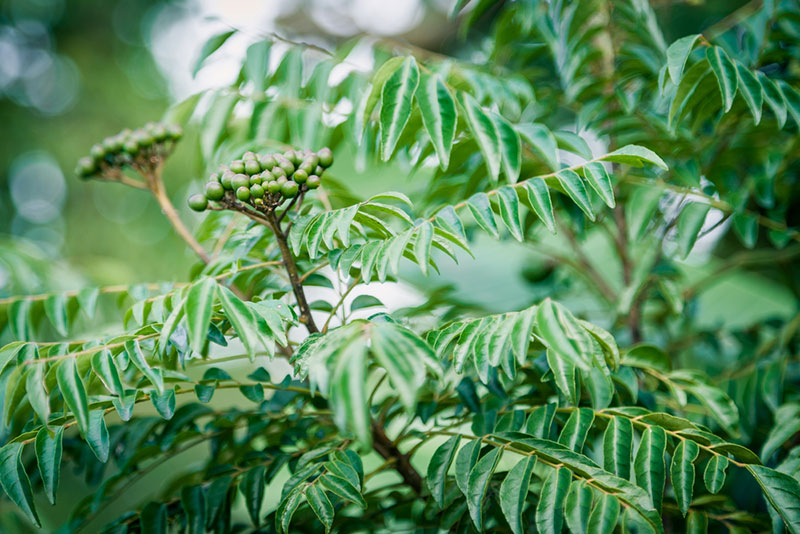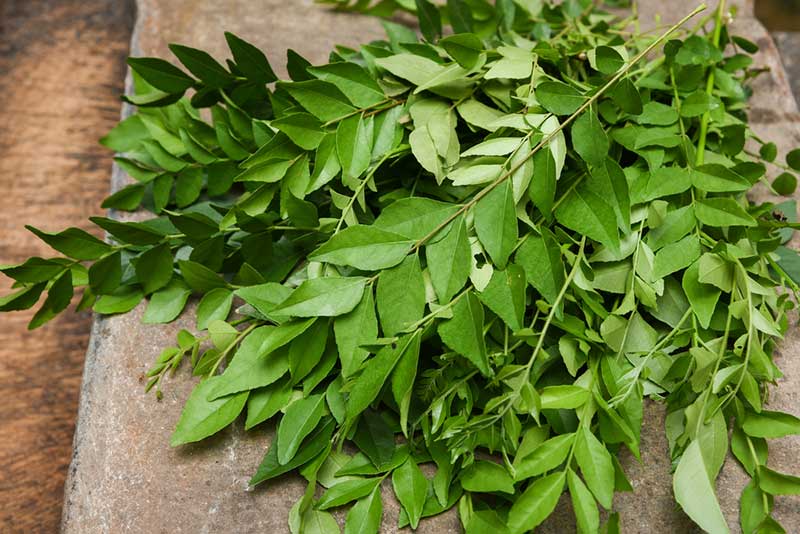
Curry is a unique flavor that comes from a variety of spices, but if you want to create the flavor easily, the curry leaf plant can be used as well.
The plant is a relatively small bush that can grow to be 20 feet tall. It is commonly grown in subtropical areas of the world, and it is relatively easy to care for.
The plant has edible fruit, but the seed is actually poisonous and should be removed before it is eaten. Curry leaves can be added to your food like a bay leaf to create a lot of flavors, which can be great in soups.
In this guide, I will provide tips to help you with growing your curry leaf plant. Curry plants are not extremely difficult to grow, but without the right care, they will not thrive.
Growing Tips for the Curry Leaf Plant
Growing Zone – This is a plant that is used to growing in a subtropical region of the world, so if you live in the United States, this is a plant that will do best in hardiness zones nine through 11. If you live in an area outside of these zones, the plant can still be grown there, but it will need to be planted in a container where it can be moved inside when it gets too cold for the plant.
Soil Requirements – When it comes to the curry leaf plant, it will do best in well-drained soil that is mildly acidic. This plant will not typically do well with adapting to other types of soil, so if you need to create a quality mixture, you can add sand or manure to the soil.
Light Requirements – This is a plant that will need full sun to thrive, but it must be used to this full exposure before you give it more than six hours of sun a day. This is especially true where the temperatures often reach over 100 degrees because the leaves can get a sunburn.
Temperature Requirements – The curry leaf plant will not do well at all, in temperatures that drop below 40 degrees Fahrenheit. In general, you’ll want to keep the air in the growing environment around 65 degrees Fahrenheit or warmer.
Watering Requirements – During the spring and the less hot months of the year, this is a plant that will grow well with a once a week watering. However, during the hot summer months, it may require water each and every day to make sure that the soil does not become too dry in the heat. You will also want to reduce the amount of water given to the plant when it is cooler outside because the plant will most likely be dormant. With this plant, you will need to make sure that the roots of the plant do not set in water; this can cause root rot and other issues that will hinder the growth of it.
Feeding Requirements – This plant does not require a lot of fertilizer to grow, so it should be fine to provide it with a little bit of liquid fertilizer once a month or so. The curry leaf plant is one that can lack iron, so you can also add a teaspoon of iron sulfate to the soil once a month as well. This will help boost the growth of the leaves and give your plant better-looking foliage.
Pruning Requirements – Pruning is something that is done to plants to keep them healthy and growing. Typically, it is something that is done once a year. All you need to do is pinch off any dead leaves or branches on the plant, and this is typically done during the spring. If the plant is not doing as well as you’d like, you can do this a few times a year to promote growth.
Propagating the Curry Leaf Plant
When it comes to the propagation of this plant, it can be done in two different ways. The first way is by planting the curry leaf seed. This is a process that will take about two years to establish, but when the tree begins to mature, it will be well worth the time and effort when the tree is thriving in your home garden.
If you do not have the patience to grow the tree from a seed, there are nurseries where it can be purchased. If you already have a plant, you can also attempt to grow a new one from a cutting off of the tree that you already have. Seeds are going to be the easiest method, but it will require some time, especially since the roots will take about three weeks to begin to grow.
Harvesting the Curry Leaf Plant

Harvesting a curry leaf plant to use for cooking is extremely simple. All you will need to do is pluck a few leaves off of the plant. The leaves are going to taste best when they are freshly picked, so you will not want to allow them to dry. In addition, the more leaves you pluck from the plant, the more the plant will grow.
Common Issues with the Curry Leaf Plant
There are not a lot of issues that this plant can face, but there are a few that are worth noting before you attempt to grow your own plant. Since the plant has a strong scent, there are not a lot of insects that will mess with the foliage, but aphids, scales, and mealybugs can still appear on the plant. If the leaves begin to change colors or become sticky, then the plant may also be infected with an infestation of some type.




